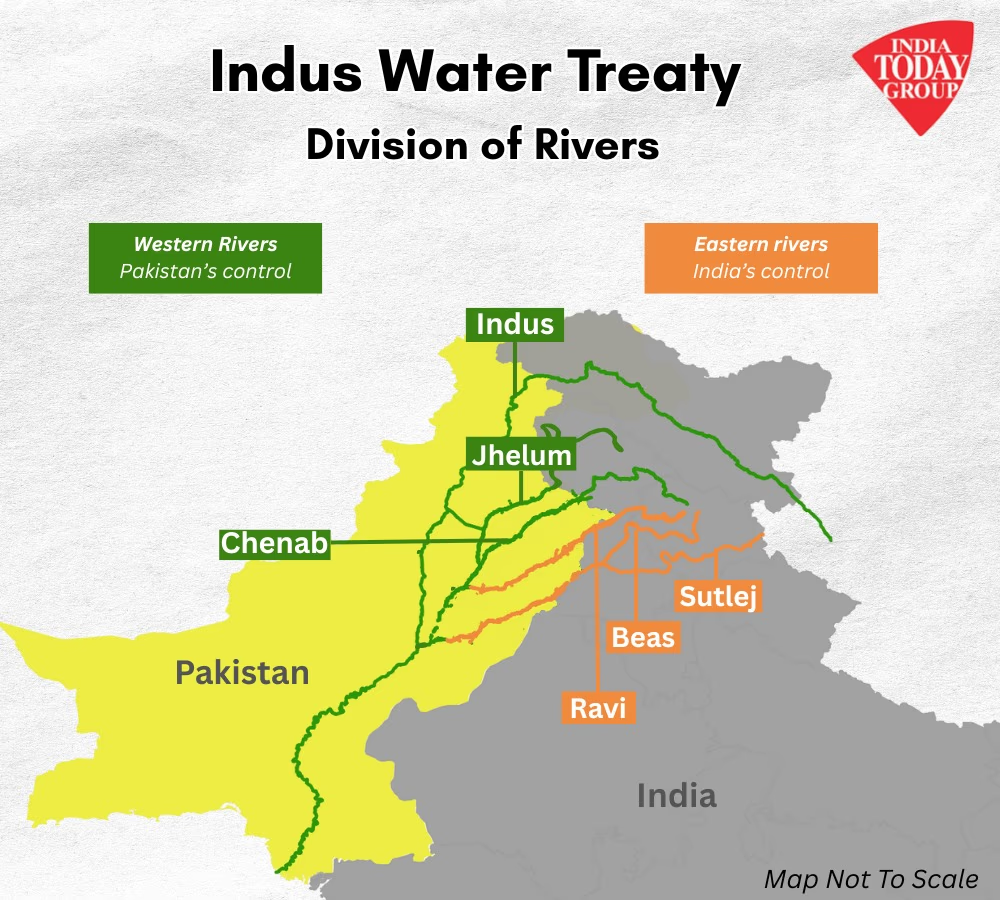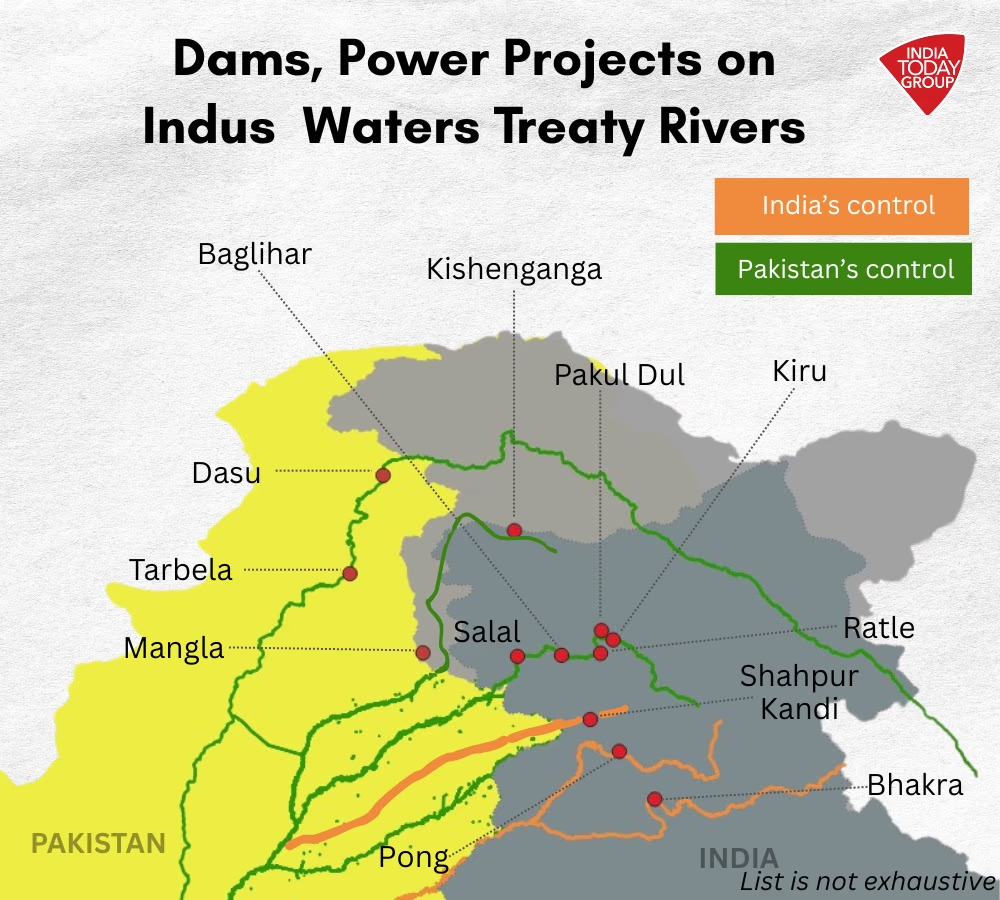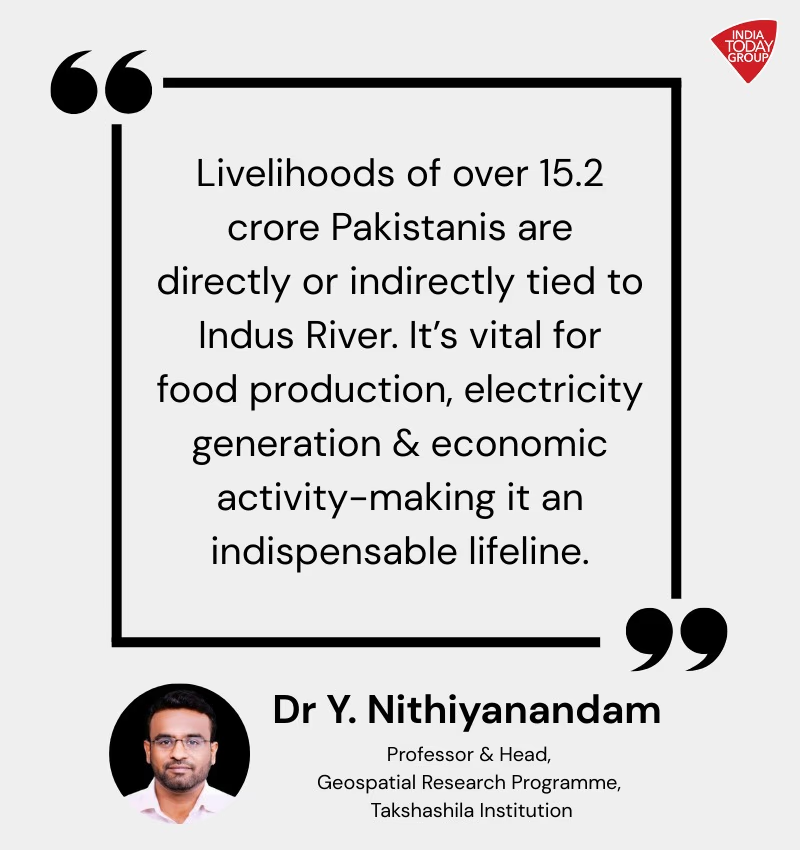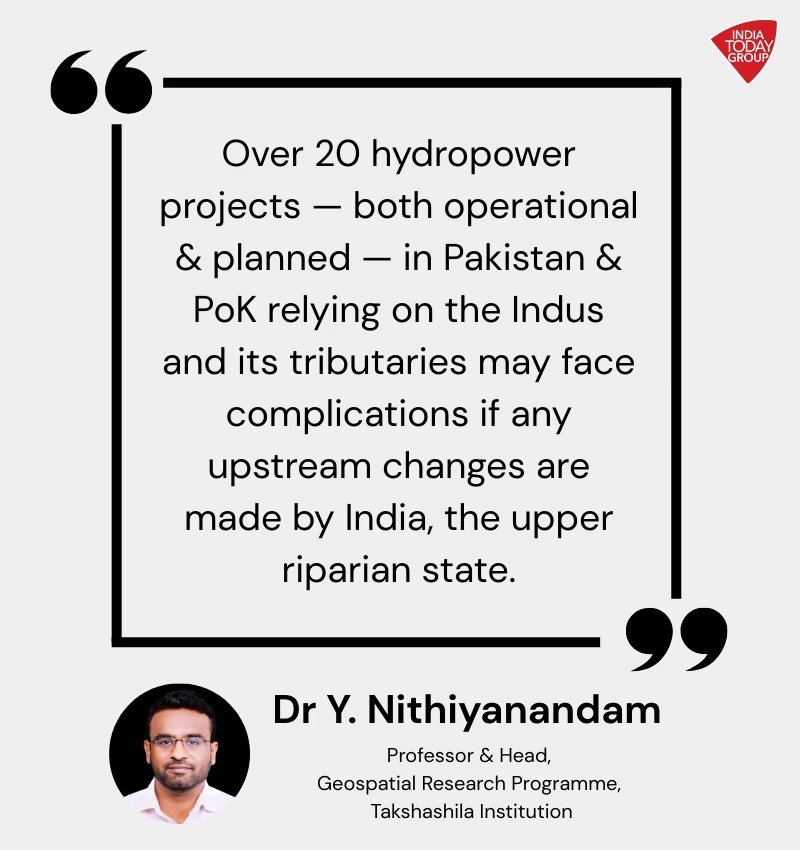The Indian government's decision to temporarily suspend the 1960 Indus Water Treaty in response to the deadly attack in Pahalgam, Kashmir, has raised numerous questions. What does the treaty encompass? Which country benefits the most? And importantly, can this move truly shake Islamabad to its core?
What is the Indus Water Treaty?
This bilateral agreement regulates the usage and distribution of the waters of the six rivers in the Indus Basin between India and Pakistan: Indus, Jhelum, Chenab, Ravi, Beas, and Sutlej. Under the treaty, the western rivers (Indus, Jhelum, and Chenab) are designated for Pakistan, while the eastern rivers (Ravi, Beas, and Sutlej) are for India. Additionally, the treaty allows both nations certain usages of the other’s allotted rivers.

Source: aajtak
The World Bank, also a signatory, has maintained this treaty despite political, military tensions, and three wars. Both countries can develop hydroelectric projects on their allocated rivers as long as it does not disrupt or diminish the water flow downstream. Of the six rivers, four originate in various parts of northern India, with the remaining two beginning in Tibet, currently administered by China. The Ravi originates from the Kullu hills, the Beas from Beas Kund near Rohtang Pass, the Jhelum from the Verinag Spring in Kashmir, and the Chenab from the confluence of the Chandra and Bhaga rivers in Himachal Pradesh, whereas the Sutlej starts from Lake Rakshastal and Indus from Lake Manasarovar in Tibet. Both India and Pakistan have built numerous dams and hydroelectric projects on these rivers.
Why is this crucial for Pakistan?
According to Dr. Y. Nithyanandam, Professor and Head of the Geospatial Research Program at the Takshashila Institution, over 20 operational and planned hydroelectric projects in Pakistan and Pakistan-occupied Kashmir (PoK) rely on the Indus River. Pakistan derives one-third of its electricity from hydropower, originating from water released from Tarbela, Mangla, and other reservoirs. A decrease in upstream flow or change in timing could impact its power-generation capabilities.
This treaty is crucial for ensuring the river water supply in Pakistan. The country’s entire irrigation, energy, and water management systems are built around it. Pakistan schedules sowing and canal operations based on this prediction. If the treaty is suspended, India won't share river flow data, making Pakistan susceptible to both drought and flooding.

Source: aajtak
More than 152 million Pakistanis are directly or indirectly reliant on the Indus River, a vital resource in food production, electricity generation, and economic activities, making it an indispensable lifeline.
While it's not as simple as pushing a button to dry up taps in Pakistan overnight, life there could become increasingly difficult. Dr. Nithyanandam notes, "Any significant alteration or diversion of river flow by India would take at least two years." The western rivers are extensive, and it's challenging to capture all the water with existing infrastructure, especially during the melting season (May-September). India’s hydroelectric projects have limited live storage capacity.

Source: aajtak
Additional Challenges for Pakistan
Studies conducted in the Indus Basin reveal excessive water exploitation and reduced river flow in Pakistan’s lower regions, with predictions of worsening conditions over the next three decades. With rising domestic demand and the increasing effects of climate change, the water stress index has surpassed 2 in these areas, indicating extreme scarcity. Historically, Pakistan has invested minimally in sustainable water usage. Currently, the country lacks both the financial capacity and infrastructure to develop alternate solutions.
Flow reduction or change in timing could intensify provincial disputes, especially between Punjab and Sindh, where water-sharing is already a politically contested issue.

Source: aajtak
Risks for India
There are downsides to this decision for India as well. As a downstream country on rivers like the Brahmaputra, originating from China, India has consistently honored downstream rights. Suspending the treaty and acting unilaterally risks setting a precedent that could be used against it in the future.




